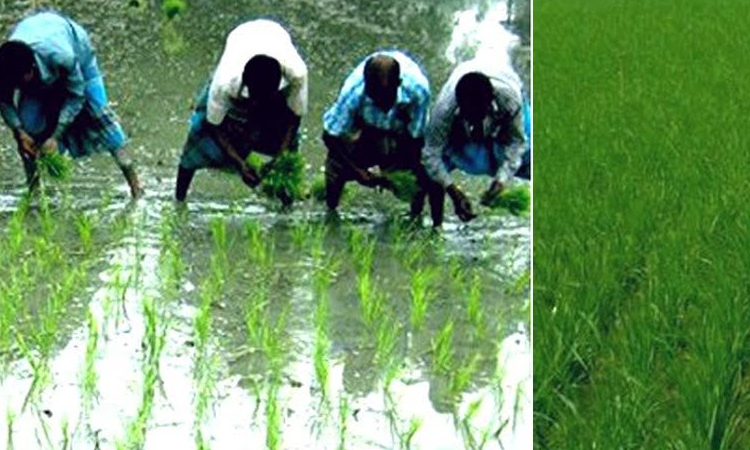News Flash
News Flash

RANGPUR, May 10, 2025 (BSS) – Aush rice production is continuously increasing as a result of pragmatic measures such as providing intensive and technical support to farmers by the relevant authorities of Rangpur Agricultural Region.
The Department of Agricultural Extension (DAE) officials said that cultivation of the short-duration and low-irrigation water consuming Aush rice as an additional cereal crop has been expanding in recent years.
During the current Kharif-1 season, transplantation of Aush rice seedlings continues in full swing now in all five districts of Rangpur, Kurigram, Gaibandha, Lalmonirhat and Nilphamari across the region.
The DAE has fixed a target of producing 1,91,460 tonnes of clean Aush rice (2,87,190 tonnes in terms of paddy) from 63,255 hectares of land for Rangpur agriculture region during this season.
Farmers have already completed transplantation of Aush rice seedlings on 39,506 hectares of land, which is 62.46 percent of the fixed target of farming the cereal crop, in the region.
“Transplantation of Aush rice seedlings will continue till the first week of June next,” Additional Director of the DAE for Rangpur region Agriculturist Md. Shafikul Islam told BSS.
Last year in 2024, farmers produced 1,84,617 tonnes of clean Aush rice (2,76,925 tonnes in terms of paddy) from 61,782 hectares of land in the region.
Earlier, farmers produced 1,84,617 tonnes of clean Aush rice from 61,782 hectares of land in 2023, 1,78,777 tonnes from 63,680 hectares in 2022, over 1.94-lakh tonnes from 62,090 hectares in 2021 and 1.83-lakh tonnes from 59,092 hectares of land in 2020.
Talking to BSS, farmers Ariful Haque, Manik Mian, Mesbahul Islam and Akmal Hossain of Rangpur Sadar upazila said they have already completed transplantation of Aush rice seedlings last week.
Rice-scientist Dr Md Abdul Mazid, a recipient of the Independence Award-2018 (food security), lauded the initiatives taken by the authorities concerned to promote less irrigation water consuming Aush rice cultivation for producing additional rice.
Dr Mazid, also a former Chief Scientific Officer of Bangladesh Rice Research Institute said, after completing Aush rice cultivation during the off-season after Boro rice harvest and before Aman rice seedling transplantation, farmers can cultivate Aman rice on the same land.
“Farming of Aush rice using unused seasonal rain waters in May, June and July should be increased during the off season as an additional and substitute cereal crop to costly Boro rice farming to increase rice production without hampering Aman cultivation,” he said.
Md. Mamunur Rashid, PhD Fellow in the Department of Agricultural Extension at Dinajpur Haji Mohammad Danesh University of Science and Technology, said farmers are cultivating Aush rice using unused rainwater during the off-season when croplands mostly remain fallow.
Rashid, also an expert in stress-tolerant crop farming, said there is a brighter prospect to further expand Aush rice cultivation to increase rice yield amid changing climate for attaining sustainable national food security.
"Cultivation of Aush rice is highly profitable as it does not require supplementary irrigation as its plants grow well making best use of unused seasonal rain waters during May, June and July months to produce additional rice,” he added.